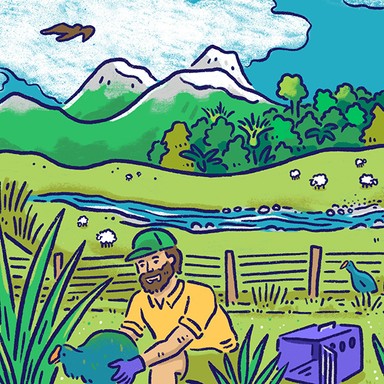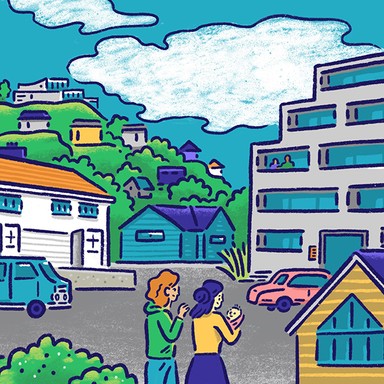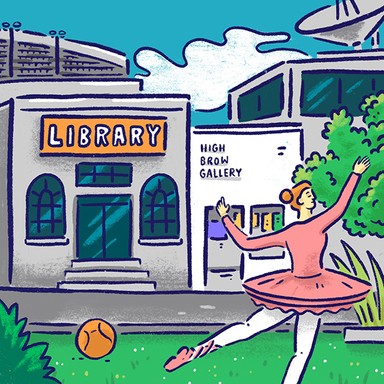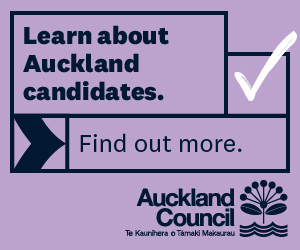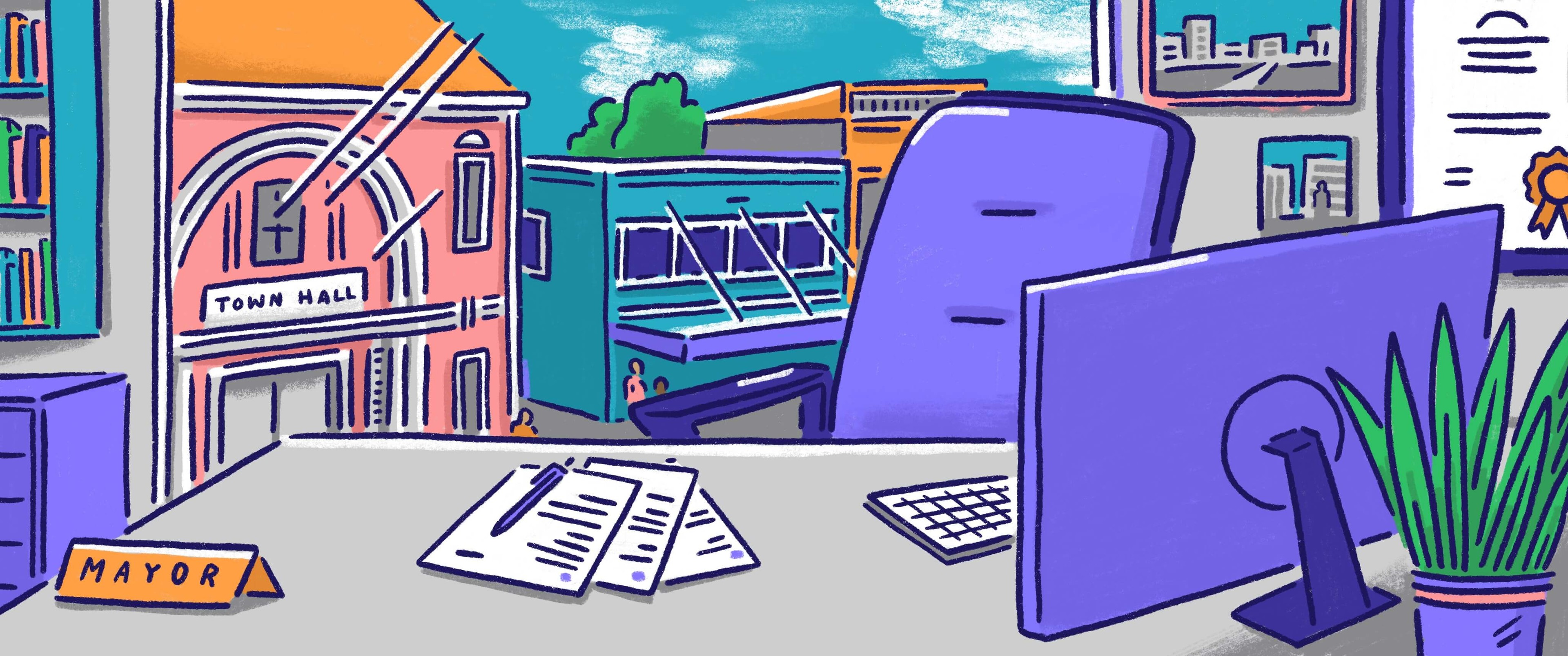
Mayor of Auckland

Transport
Helping communities get from A to B is a key responsibility of local government, from making sure the buses run on time to providing car parking and walking and cycling paths. Whether public transport is the responsibility of the regional or local council depends on where you are in the country. Local councils also own 87% of New Zealand’s roads.

Transport
Helping communities get from A to B is a key responsibility of local government, from making sure the buses run on time to providing car parking and walking and cycling paths. Whether public transport is the responsibility of the regional or local council depends on where you are in the country. Local councils also own 87% of New Zealand’s roads.
Introduce free public transport to incentivise the use of public transport and support reducing transport emissions by 64% by 2030.
Support the significant uptake of cycling and micromobility and invest in cycleways, safety and community funding to support cycle use.
Ensure a reliable, frequent and safe public transport service, including the introduction of more crosstown services in growth areas.
Forge seamless smooth transport infrastructure, with significantly reduced road congestion with innovative Aucklanders' ideas and rewards.
Increase public transport, cycling, share bikes, road safety and user friendly transport options without added costs, road congestion.
Create safer, cheaper, affordable reduced disability travel city wide on taxis, shuttles, and transport providers for all disabled and carers.
Sell or lease council car parks for sustainable development and to fund transport initiatives.
Use small electric vehicles for public transport on feeder routes, controlled by an Uber-style app.
Provide work-from-home and glide-time support for council workers and contractors as another way of reducing emissions and congestion.
Cancel the nonsense 'climate change' plan, costing ratepayers $1,000 million over 10 years, for a 1% reduction in vehicle emissions.
Cancel the building of bicycle lanes, which 82% of ratepayers don't want, costing $2000 million. The delusional nonsense needs to stop.
Restore proper servicing to transport infrastructure like roads, bridges, car parks and footpaths, because Auckland is short of 500 bus drivers.
Improve public transport with direct express routes. Footpaths should be designed wider for shared pedestrians and cycleways.
More ferry services for the weekend. Increase park and ride facilities to increase bus users.
Ryan has a great policy to solve traffic issues. It is called the home-business owners circumference policy.
Better more energy efficient transport to the airport would be a better way to save fuel.
EFTPOS on buses. This should make a great difference. Why are most of these huge buses driving around empty, or with one passenger?
Reduce traffic congestion and move heavy trucks off the road overnight by making freight from the port rail-only.
Use smart technology to make bus journeys more reliable and faster, for example by giving preference at intersections.
Cycleways delivered at more realistic costs – not the crazy $12,000 per metre some projects have blown-out to.
Decongest roads for productivity and health by flexible work hours and location, video conferencing, incentives to to walk, bike, scooter.
Allow all wide footpaths to be used for active transport (such as bikes and scooters), at speeds under 15 km/h within 20m of a pedestrian.
Encourage innovation and testing of different ideas to see how well they work, such as a bike, walk and scooter lane on the Harbour Bridge.
Halt the $15 billion light-rail project. Complete a network of reliable, more cost effective transport options.
Establish a congestion reduction unit by reallocating existing resources to get traffic moving and set congestion reduction targets.
Balance transport spending to much better reflect Aucklanders' travels needs and significantly improve engagement with local communities.
Stop the Britomart to Auckland rail, and join Puhinui to the Airport by a 7km track. Save $14.9 billion.
Complete North Shore to Britomart and to West Auckland. A ring rail central isthmus system. Manukau to Panmure. Penrose to Onehunga
No removal of parking. No increase in cycling or removal of road space for such on major roads.
Incentivise and plan the city to localise both work and living to minimise everyday travel.
Overhaul Auckland Transport from top to bottom. Redefine its objectives, the key objective, free up bottlenecks and keep the transport network free-flowing.
Review long-term transport infrastructure needs based on future modes of transport all primarily powered by renewable energy.
Encourage share electric cars, ebikes and scooters in local areas for local travel.
Increase our ferry capabilities so we have an Auckland wide network from Whangaparaoa, to Aotea, to Riverhead and Papatoetoe.
Bury Spaghetti Junction, turn it into a tunnel network, and create green spaces, apartments and light rail on top.
Stop the further creation of unnecessary road restrictions such as speed humps, lane reducing projects. Remove many of them.
Establish ripple strip warnings as a 'must have' for pedestrian crossings and dangerous intersections. This is to warn and slow traffic.
Terminate the light rail project and campaign to replace it with a second harbour crossing, and investigate all above-ground mass transport.
Protect the birthright of residents to access all public spaces under their own foot or pedal power, with free pubic transport otherwise.
Cut traffic congestion with free public transport, awarding contracts to local people, and incentivise car pooling and walking school buses.
Fix potholes before building more speed bumps!
Waitematā cyclist and bike shuttle – battery electric vehicles set times stationed at the bottom of both ends of Auckland's Harbour Bridge.
Continue council plans to improve public transport investment across the bus, rail and ferry networks.
As Auckland Council is a shareholder in the Auckland Airport, investigate other ways to maximize investments and profit.
Introduce free public transport to incentivise the use of public transport and support reducing transport emissions by 64% by 2030.
Support the significant uptake of cycling and micromobility and invest in cycleways, safety and community funding to support cycle use.
Ensure a reliable, frequent and safe public transport service, including the introduction of more crosstown services in growth areas.
Forge seamless smooth transport infrastructure, with significantly reduced road congestion with innovative Aucklanders' ideas and rewards.
Increase public transport, cycling, share bikes, road safety and user friendly transport options without added costs, road congestion.
Create safer, cheaper, affordable reduced disability travel city wide on taxis, shuttles, and transport providers for all disabled and carers.
Sell or lease council car parks for sustainable development and to fund transport initiatives.
Use small electric vehicles for public transport on feeder routes, controlled by an Uber-style app.
Provide work-from-home and glide-time support for council workers and contractors as another way of reducing emissions and congestion.
Cancel the nonsense 'climate change' plan, costing ratepayers $1,000 million over 10 years, for a 1% reduction in vehicle emissions.
Cancel the building of bicycle lanes, which 82% of ratepayers don't want, costing $2000 million. The delusional nonsense needs to stop.
Restore proper servicing to transport infrastructure like roads, bridges, car parks and footpaths, because Auckland is short of 500 bus drivers.
Improve public transport with direct express routes. Footpaths should be designed wider for shared pedestrians and cycleways.
More ferry services for the weekend. Increase park and ride facilities to increase bus users.
Ryan has a great policy to solve traffic issues. It is called the home-business owners circumference policy.
Better more energy efficient transport to the airport would be a better way to save fuel.
EFTPOS on buses. This should make a great difference. Why are most of these huge buses driving around empty, or with one passenger?
Reduce traffic congestion and move heavy trucks off the road overnight by making freight from the port rail-only.
Use smart technology to make bus journeys more reliable and faster, for example by giving preference at intersections.
Cycleways delivered at more realistic costs – not the crazy $12,000 per metre some projects have blown-out to.
Decongest roads for productivity and health by flexible work hours and location, video conferencing, incentives to to walk, bike, scooter.
Allow all wide footpaths to be used for active transport (such as bikes and scooters), at speeds under 15 km/h within 20m of a pedestrian.
Encourage innovation and testing of different ideas to see how well they work, such as a bike, walk and scooter lane on the Harbour Bridge.
Halt the $15 billion light-rail project. Complete a network of reliable, more cost effective transport options.
Establish a congestion reduction unit by reallocating existing resources to get traffic moving and set congestion reduction targets.
Balance transport spending to much better reflect Aucklanders' travels needs and significantly improve engagement with local communities.
Stop the Britomart to Auckland rail, and join Puhinui to the Airport by a 7km track. Save $14.9 billion.
Complete North Shore to Britomart and to West Auckland. A ring rail central isthmus system. Manukau to Panmure. Penrose to Onehunga
No removal of parking. No increase in cycling or removal of road space for such on major roads.
Incentivise and plan the city to localise both work and living to minimise everyday travel.
Overhaul Auckland Transport from top to bottom. Redefine its objectives, the key objective, free up bottlenecks and keep the transport network free-flowing.
Review long-term transport infrastructure needs based on future modes of transport all primarily powered by renewable energy.
Encourage share electric cars, ebikes and scooters in local areas for local travel.
Increase our ferry capabilities so we have an Auckland wide network from Whangaparaoa, to Aotea, to Riverhead and Papatoetoe.
Bury Spaghetti Junction, turn it into a tunnel network, and create green spaces, apartments and light rail on top.
Stop the further creation of unnecessary road restrictions such as speed humps, lane reducing projects. Remove many of them.
Establish ripple strip warnings as a 'must have' for pedestrian crossings and dangerous intersections. This is to warn and slow traffic.
Terminate the light rail project and campaign to replace it with a second harbour crossing, and investigate all above-ground mass transport.
Protect the birthright of residents to access all public spaces under their own foot or pedal power, with free pubic transport otherwise.
Cut traffic congestion with free public transport, awarding contracts to local people, and incentivise car pooling and walking school buses.
Fix potholes before building more speed bumps!
Waitematā cyclist and bike shuttle – battery electric vehicles set times stationed at the bottom of both ends of Auckland's Harbour Bridge.
Continue council plans to improve public transport investment across the bus, rail and ferry networks.
As Auckland Council is a shareholder in the Auckland Airport, investigate other ways to maximize investments and profit.
Mayor
Compare the mayoral candidates in your area
Local council
Compare the candidates for your city or district council
Regional council
Compare the candidates for your regional council
Local board
Compare the candidates for your local or community board

